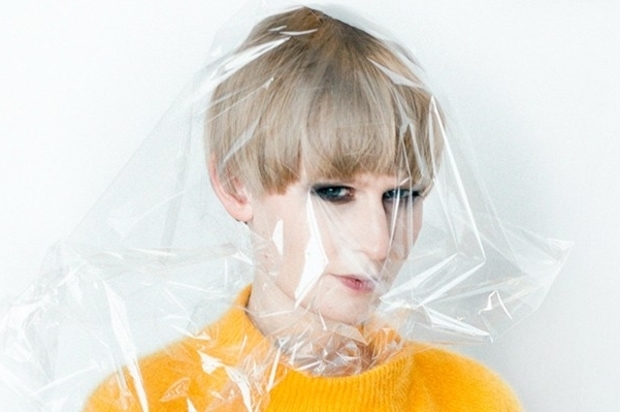Thomas Cury reviews experimental musician Jenny Hval’s recent London gig at Rich Mix.
Jenny Hval is a divisive figure. She is seen by some as the embodiment of affected, pseudo-artsy pop music; for others, she is one of the most compelling and avant-garde artists around. But even for those who think of Jenny Hval as ‘pretentious bullshit’, it is, as Stereogum so aptly put it, ‘the kind of pretentious bullshit that’s nearly impossible to look away from’.
Hval’s performance at Rich Mix was perplexing, to say the least. For the Jenny Hval haters, there was plenty to criticise: Hval punctuated the performance with stray, quasi-philosophical observations, such as the importance of having ‘skin so we can keep it all in’. At one point, she and her band performed a workout inspired by B-movie actress Linnea Quigley’s zombie-themed exercise tapes, twisting vein-like yarn around themselves whilst contorting their legs into uncomfortable positions.

Hval is however too self-aware and too controlled in her creative expression to allow her performance to be dismissed as ‘pretentious’. She seamlessly oscillated between high-concept performance art and offhand stage banter, at one point joking about how she cannot sell her ‘Not Safe For Capitalism’ stickers, for obvious reasons. To an ardent Jenny Hval fan, her stage presence – which can at times seem casual and disappointingly ‘off-the-cuff’ – feels almost like a betrayal. The enigmatic mystery of her persona, often shrouded in dizzying soundscapes, collapsed for a brief moment, and we were left with a performer ‘in the flesh’.
This tension between Jenny Hval, the revered performance artist, and Jenny Hval, the pseudo-intellectual eccentric, is what renders her show so beguiling. Her performance, in fact, was not a performance at all: it was a performance about performance. Hval constantly toys with the constructed ‘self’ on the stage, playing equally to her detractors and to her most passionate supporters. At the heart of this self-presentation lies the tension between the personal and the public, and its relation to gender: at one point, the tuba player pulled out her phone and began recording Hval perform whilst she danced around the stage, getting at times uncomfortably close to her, before eventually shifting the camera’s focus toward the audience. Later on in the show, Hval sat down, and began rubbing the microphone against her scarf – though she was positioned centre-stage, it felt as if the audience had accidentally stumbled upon an intimate moment, meant for Hval only.

This erasure of the boundary between the private and the personal is a result of the ever-present male gaze, cast upon the female performer. The gaze seeks to dictate the artist: it wants her to reveal herself but not so much so that the illusion is broken. It wants the female performer to sexualise the body, put it on display, but not in such a way that it becomes uncontrollable. At the end of the show, Hval walked back on stage, only to proclaim ‘I don’t like encores, let’s talk instead’. In that moment, Hval was unshackling herself from that gaze through the smallest of gestures, through the subversion of what is expected of the performer at the end of show. Hval seemed aware throughout that this is an uphill battle – but by performing on her own terms, she showed that it is not a battle without hope.
Featured image courtesy of subbacultcha.nl





